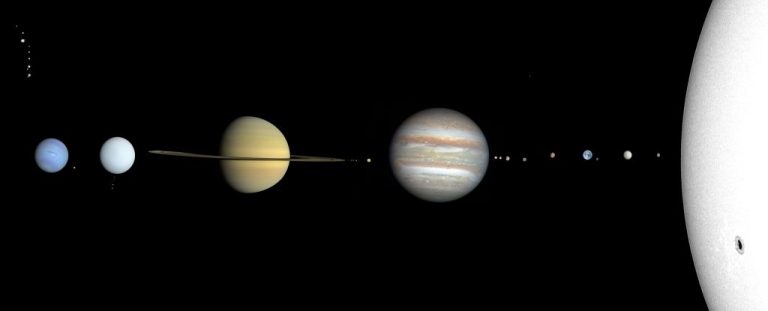The emptiness of space is supposed to be quiet. Where atoms are too spaced apart to allow sound waves to propagate, any scream is drowned out before it can begin.
But that doesn’t mean no sound can be derived. In fact, if we could only hear them, some bodies in the solar system would emit a deafening clamor.
Others we wouldn’t be able to hear… but we could convert the plasma waves rippling around them. Plasma waves form when electrons become trapped in magnetic field lines around large objects such as planets and spiral down toward them.
If we convert the frequencies of plasma waves into sounds, we can hear their strange cries and screams.
Each body in the solar system has its own sounds. The Sun, for example, should be positively roaring as its surface swirls with constantly rising and falling convection cells larger than the state of Texas.
Scientists reasoned that if sound could travel through space, we could hear the Sun as a constant roar pounding on an object. Breathtaking 100 decibels.
frameborder= »0″allow= »accelerometer; autoplay; write to clipboard; encrypted media; gyroscope; picture in picture; web sharing » allow full screen>
The very first sounds from space were recorded by astronomer Karl Guthe Jansky in 1932.
He had built a rotating radio telescope nicknamed Jansky’s carousel, designed to detect a specific frequency range of radio waves. When his data started coming in, there was a persistent background hiss that, Jansky discovered, was no random noisebut the sound of the heart of the Milky Way itself.
When we began sending probes into space with the launch of Sputnik in 1957, we began to obtain more data, captured by the instruments on board these probes.
These include instruments designed to capture invisible forms of light, as well as waves in plasma in the sometimes chaotic environments around the solar system’s planets.
Radio waves are not sound; it is a form of light in which sound data can be encoded and, when picked up by a receiver, converted back into sound. Cell phones work the same way. The technology for converting electromagnetic waves into sound is very well established.
frameborder= »0″allow= »accelerometer; autoplay; write to clipboard; encrypted media; gyroscope; picture in picture; web sharing » allow full screen>
In fact, we’ve even heard radio waves in space that scientists have translated into speech. These are radio waves from Earth that have propagated through space, but this demonstrates that the data captured by these instruments is accurate.
Plasma waves swirling around planets can also generate interesting chirps and whistles called choruses.
Those from Earth can look a bit like birds or whales. Saturnwith its complex system of moons and rings, sounds like the soundtrack to a strange 1950s science fiction film.
frameborder= »0″allow= »accelerometer; autoplay; write to clipboard; encrypted media; gyroscope; picture in picture; web sharing » allow full screen>
Even JupiterMoons have their own complex sound profiles. Europe And Ganymede have both been recorded emitting plasma sounds that resemble robotic beeps and beeps. And that of Jupiter powerful ultraviolet auroras are absolutely breathtaking.
March doesn’t really have a magnetic field, but we know what its winds are like. Both InSight Lander and the Perseverance Rover recorded the haunting, lonely sounds of Martian winds, as dust devils dance across the dusty surface.
It’s not just about the solar system. Space is huge and strange, and converting light into sound can help scientists discover hidden details they might have missed. So, if you want to feel really small, you can listen to the sound of a supermassive black holebuzzing in space 250 million light years away.
NASA has compiled a number of his sonifications into a playlist that you can listen to on NASA Science Website. You can also find a bunch of other things at Space Audio, a YouTube channel run by a single volunteer from the University of Iowa. If you want a really weird soundtrack for a party, your daily run, or just a nice relaxing hot bath, these resources have you covered.



